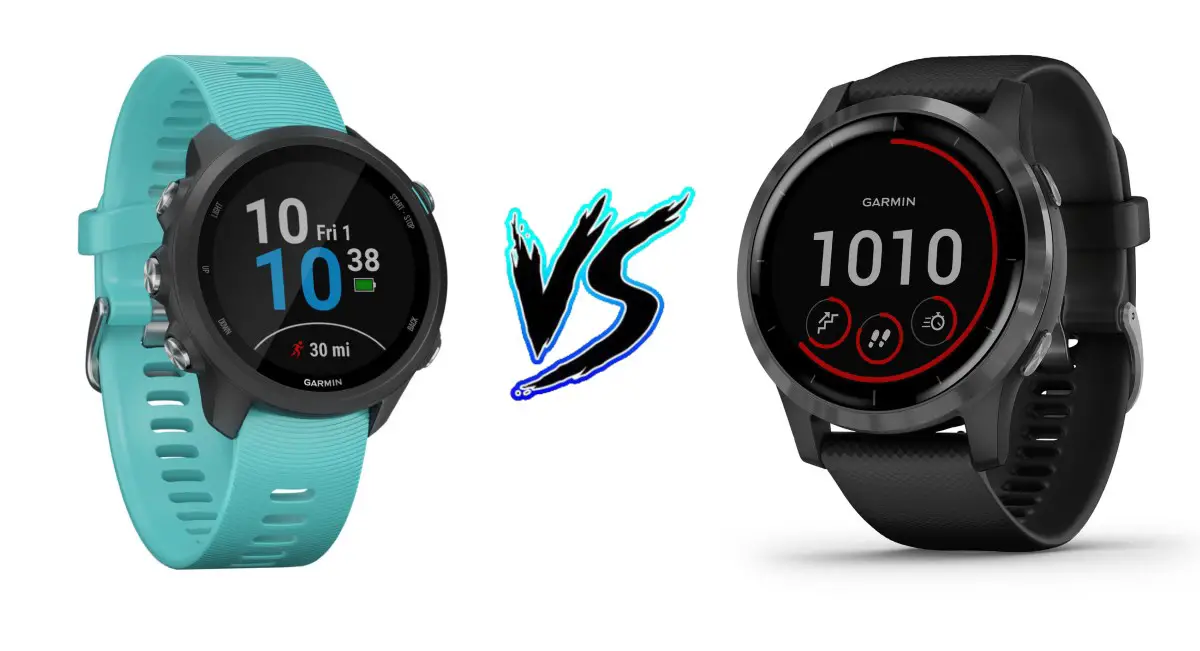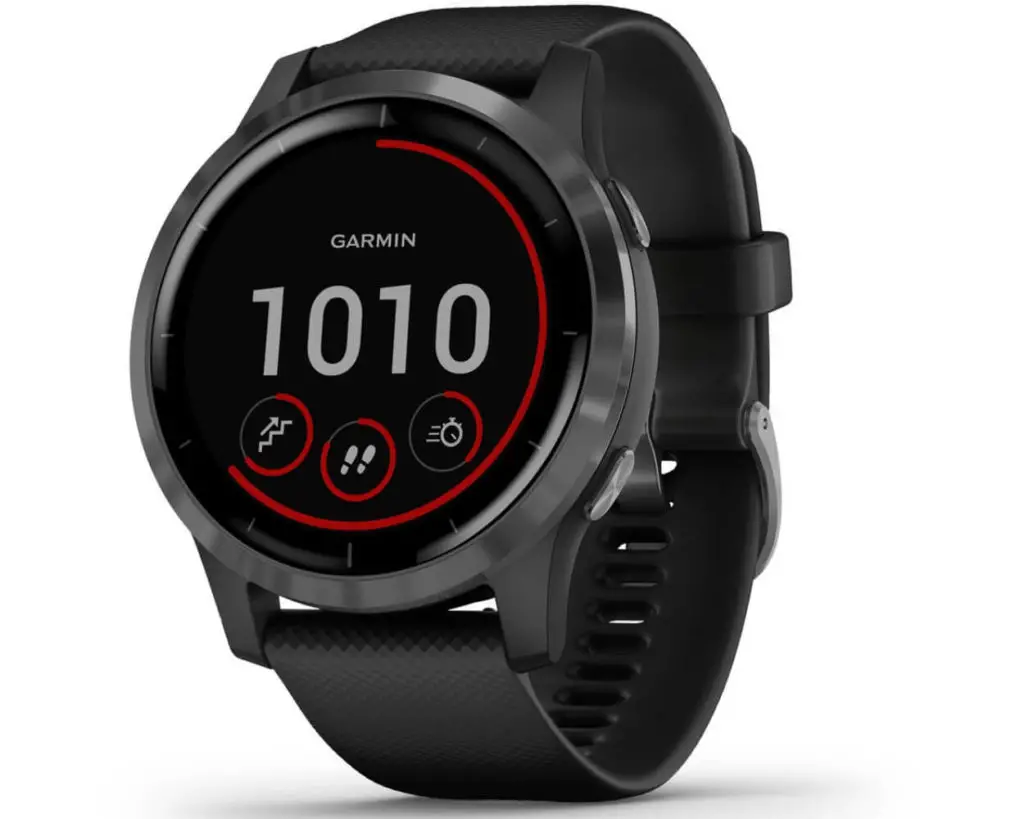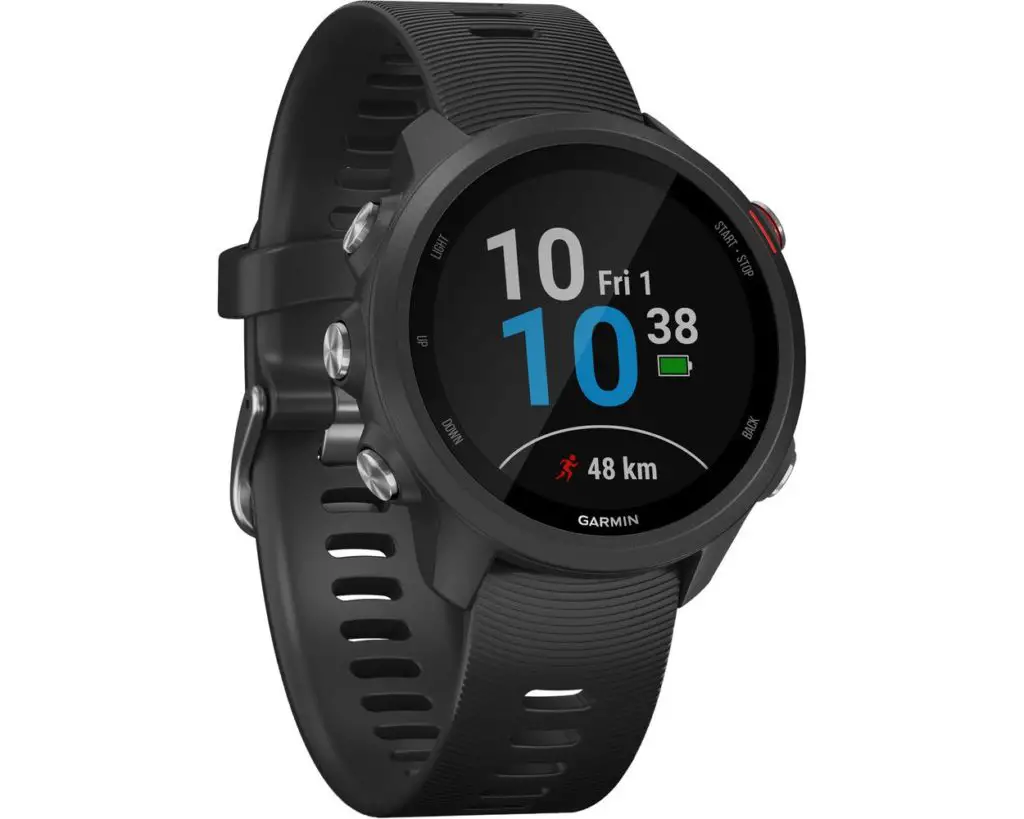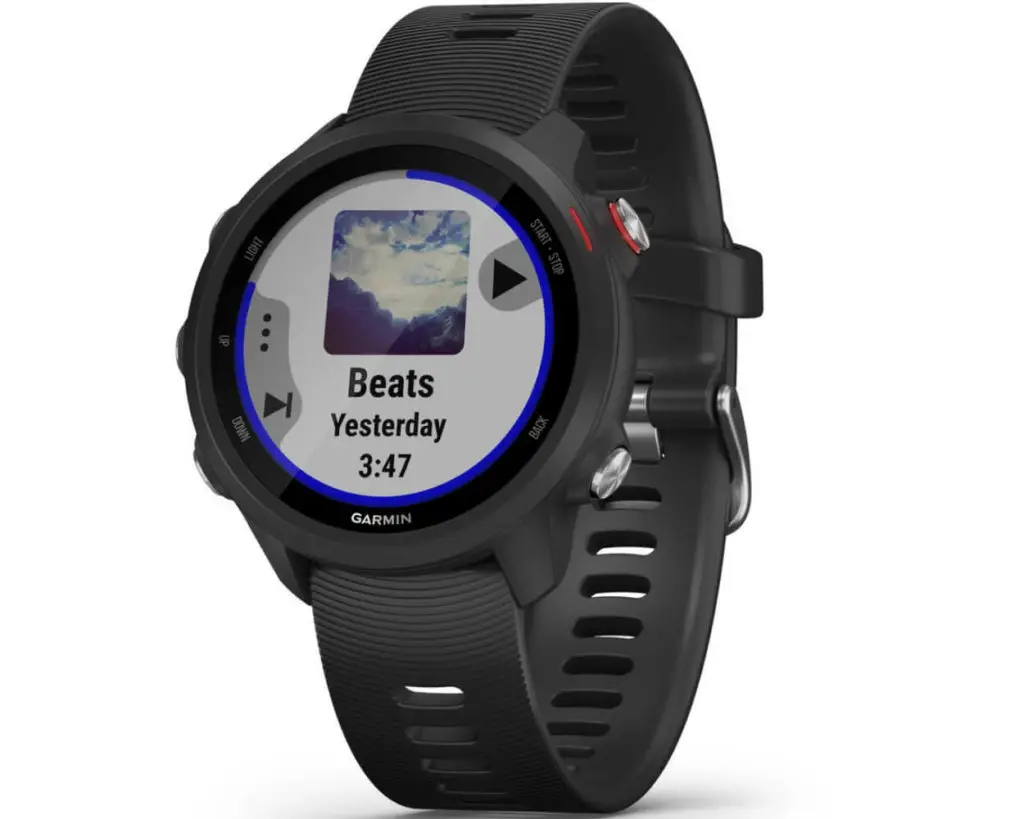The Garmin Forerunner 245 is a dedicated GPS running watch with decent activity tracker features and a good measure of sports modes.
The Garmin Vivoactive 4 is a premium GPS activity tracker with plenty of sports modes, guided workouts, and a high quality touchscreen.
But which of these two watches is better suited to your needs? To help you find out, we are going to compare all the key similarities and all the key differences, together with some simple recommendations at the end.
Let’s dive in.
What are the main differences between the Forerunner 245 and the Garmin Vivoactive 4?
- Touchscreen (Vivoactive 4)– The Vivoactive 4 has a touchscreen, whereas the Forerunner 245 relies exclusively on buttons to work the watch. A lot of runners prefer a ‘button only’ setup.
- Advanced Running Dynamics (FR245) – Only the Forerunner 245 supports advanced running dynamics. This means real time access to cadence, stride length and other running specific metrics.
- Golf Mode (Vivoactive 4) – This is a big selling point for people who play golf regularly. The Vivoactive 4 is basically an advanced activity tracker, that doubles up as a dedicated golf watch.
- Guided Workouts (Vivoactive 4) – If you want access to guided workouts at the gym, with visual representations of each exercise on the screen, you will need to invest in the Vivoactive 4.
- Training Status, Training Load & Training Effect (Forerunner 245): With the FR245 on your wrist, you can measure and assess a bunch of different training metrics. It basically tells you when you’re over training, when your under-training, and when you’re getting it exactly right.
- Race Predictor (FR245) – The Forerunner 245 will use your VO2 max estimate and your training history to predict a potential race time.
- Virtual Partner (Forerunner 245) – Garmin’s virtual partner technology allows you to set a pace for the Virtual Partner and race against it. This can be a great tool for achieving target race times.
- Barometric Altimeter (Vivoactive 4) – Only the Vivoactive 4 has a built-in barometric altimeter. This means it’s slightly better for measuring vertical movements during endurance exercises like running and cycling. It also opens up quite a few more sports modes.
FR245 vs Vivoactive 4 - Key Similarities
Forerunner 245
Vivoactive 4
6 Hours
6 Hours
Stryd/RunScribe
Stryd/RunScribe
Forerunner 245 vs Vivoactive 4 - Key Differences
Forerunner 245
Vivoactive 4
1.2" (30.4 mm) diameter
1.3" (33.0 mm) diameter
240 x 240 pixels
260 x 260 pixels
42.3 x 42.3 x 12.2
45.1 x 45.1 x 12.8 mm
38.5 g
50.5 g
19
20
7 Days
8 Days
24 Hours
18 Hours
14
20
Comparison of Sports Modes
| Forerunner 245 - Sports Modes | Vivoactive 4 - Sports Modes |
|---|---|
| 01) Strength Training | 01) Strength Training |
| 02) Cardio Training | 02) Cardio Training |
| 03) Elliptical Training | 03) Elliptical Training |
| 04) Stair Stepping | 04) Stair Stepping |
| 05) Indoor Rowing | 05) Indoor Rowing |
| 06) Yoga | 06) Yoga |
| 07) Running | 07) Running |
| 08) Treadmill Running | 08) Treadmill Running |
| 09) Indoor Track Running | 09) Indoor Track Running |
| 10) Trail Running | 10) Trail Running |
| 11) Cycling | 11) Cycling |
| 12) Indoor Cycling | 12) Indoor Cycling |
| 13) Pool Swimming | 13) Pool Swimming |
| 14) Walking | 14) Skiiing |
| 15) Snowboarding | |
| 16) XC Skiing | |
| 17) Stand Up Paddleboarding | |
| 18) Rowing | |
| 19) Walking | |
| 20) Golf |
Main Reasons To Choose the Forerunner 245
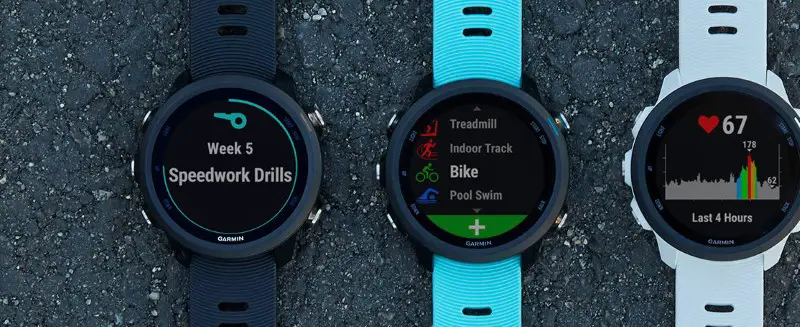
1. It's the better choice for serious runners
The main reason the Forerunner 245 is better than the Vivoactive 4 (for runners specifically), is because it boasts support for Garmin advanced running dynamics. This quite literally opens up the following running metrics on the FR245.
- Ground Contact Time – The time your foot spends on the ground with each stride.
- Ground Contact Balance – Symmetry between left and right foot when running.
- Vertical Oscillation – The amount of ‘bounce’ in your running motion. Reducing the amount of bounce in your stride can improve your running efficiency/economy.
- Vertical Ratio – the cost-benefit ratio with stride length. This stat can help you find the ideal stride length for setting new a PB, in any distance.
- Cadence – Real time cadence metrics, displayed on your watch
- Stride Length – Real time stride length data, displayed on your watch
However, it’s worth mentioning that in order to unlock these advanced running dynamics, you will need to invest in one of the following 3 accessories.
- Garmin HRM-Run (Chest Strap)
- Garmin HRM-Tri (Chest Strap)
- Garmin Running Dynamics Pod
2. The GPS battery life is significantly longer
This doesn’t require too much explanation. While the GPS battery life of the Vivoactive 4 is actually pretty decent at 18 hours, the GPS battery life of the the Forerunner 245 is about 25% longer, at 24 hours. The bullet points below make the difference a bit clearer.
- Vivoactive 4 GPS Battery Life: Up to 18 hours
- Forerunner 245 GPS Battery Life: Up to 24 Hours
3. The FR245 is a lot lighter
Although both watches are reasonably light, the Forerunner 245 is is definitely one of the lightest watches in Garmin’s line up. Again, the bullet points below clarify the difference in weight.
- Vivoactive 4 Weight- 50.5 grams
- Forerunner 245 Weight – 38.5 grams
Main Reasons To Choose the Vivoactive 4

1. It has significantly more sports modes
The total number of sports modes is probably the biggest difference between the Vivoactive 4 and the Forerunner 245.
- Vivoactive 4 – 20 Sports Modes
- Forerunner 245 – 14 Sports Modes
These are the extra sports modes that you get, if you choose the Vivoactive 4.
- Golf Mode
- Snowboarding
- Skiing
- Cross Country Skiing
- Outdoor Rowing
- Stand Up Paddleboarding
2. The Guided Workouts are pretty cool
The Vivoactive 4 comes with pre-loaded cardio, strength, yoga and Pilates workouts that are super easy to follow on the screen.
Perhaps more importantly, you can download additional workout routines through the Garmin connect app, so you can upgrade your routines as your fitness levels improve.
Ultimately, Garmin have done a pretty good job here. The guided workouts are a great addition for anyone who needs a bit of help with their fitness routine, be it at the gym or even in the comfort of your own home.
3. It feels more like a Smartwatch with the touchscreen
It’s worth pointing out that the screen of the Vivoactive 4 is a little bit bigger than the screen of the Forerunner 245. More importantly, the Vivoactive 4 has a touchscreen, whereas the FR245 uses a button-only setup.
The result of the larger, touch-friendly screen is that the Vivoative feels and functions like more of a Smartwatch. If your comfortable using a modern day Smartphone, you will find the Vivoactive 4 very easy to navigate.
4. The Built-in Barometric Altimeter is big drawcard
The main benefit of the built-in barometric altimeter is better calculation of vertical movements during exercise. This is particularly relevant for road runners, trail runners, road cyclists and mountain bikers.
Basically, instead of relying on the watch’s GPS alone to calculate vertical movements, the Vivoactive 4 also uses changes in atmospheric pressure from the altimeter to assess upward and downward movements.
This is also why the Vivoactive 4 can track how many flights of stairs you take during the day (which the Forerunner 245 can’t do). It relies on the built-in altimeter to do this.
Final Thoughts
If you want some super simple thoughts on how to choose between these two units.
Go for the Forerunner 245 if:
- You’re passionate about running
- You prefer sports watches that don’t have touchscreens
Go for the Vivoactive 4 if:
- You want the more well-rounded fitness watch
- You’re totally fine with touchscreens
- You want access to all the extra sports modes like golf, snowboarding and rowing

